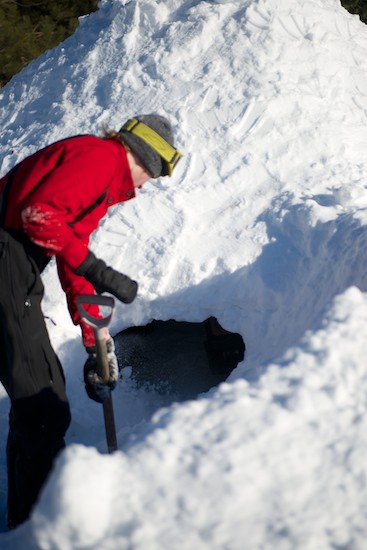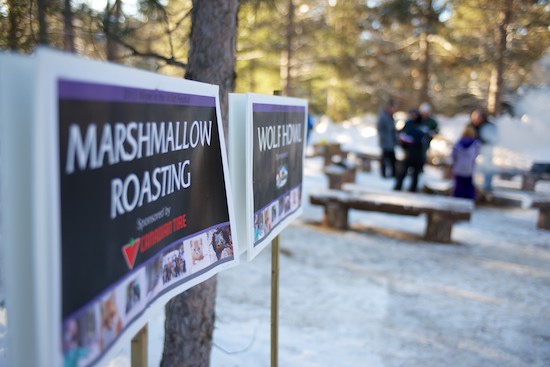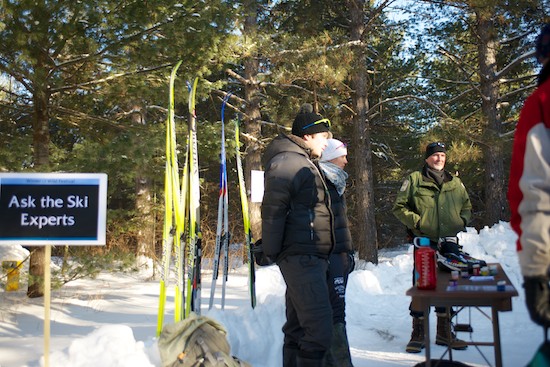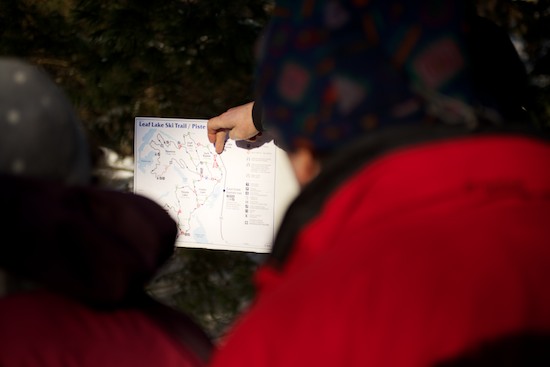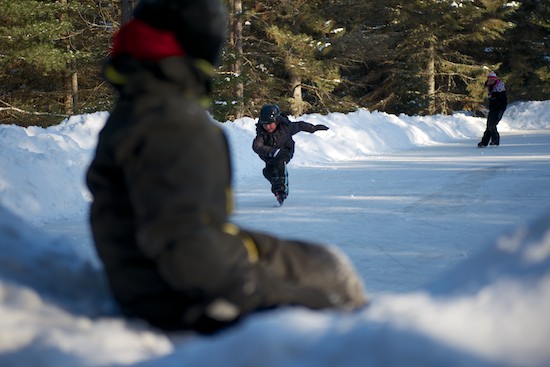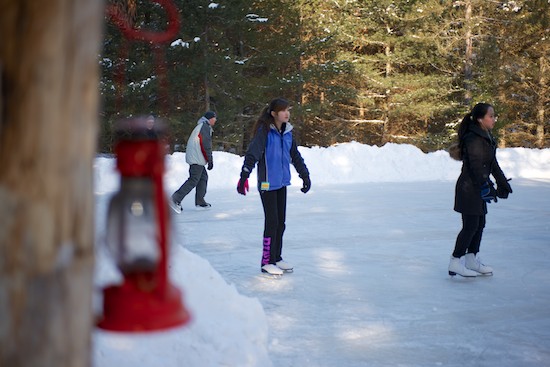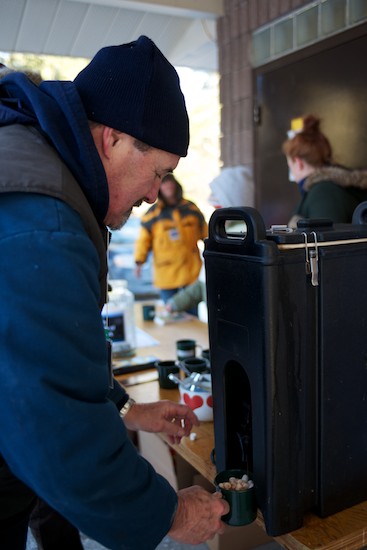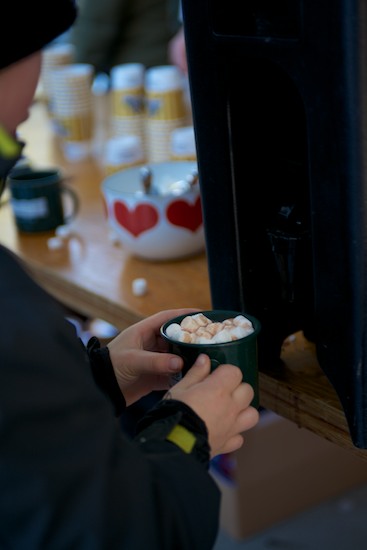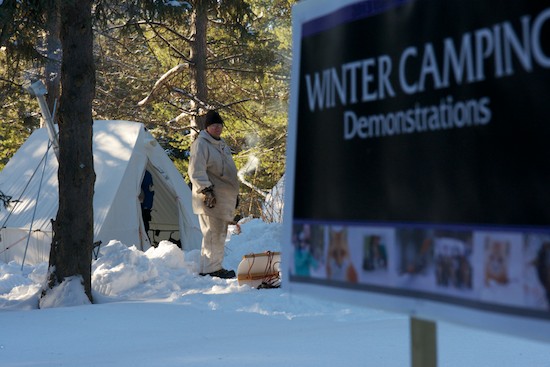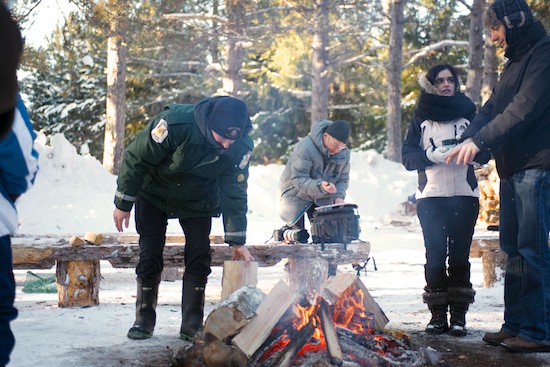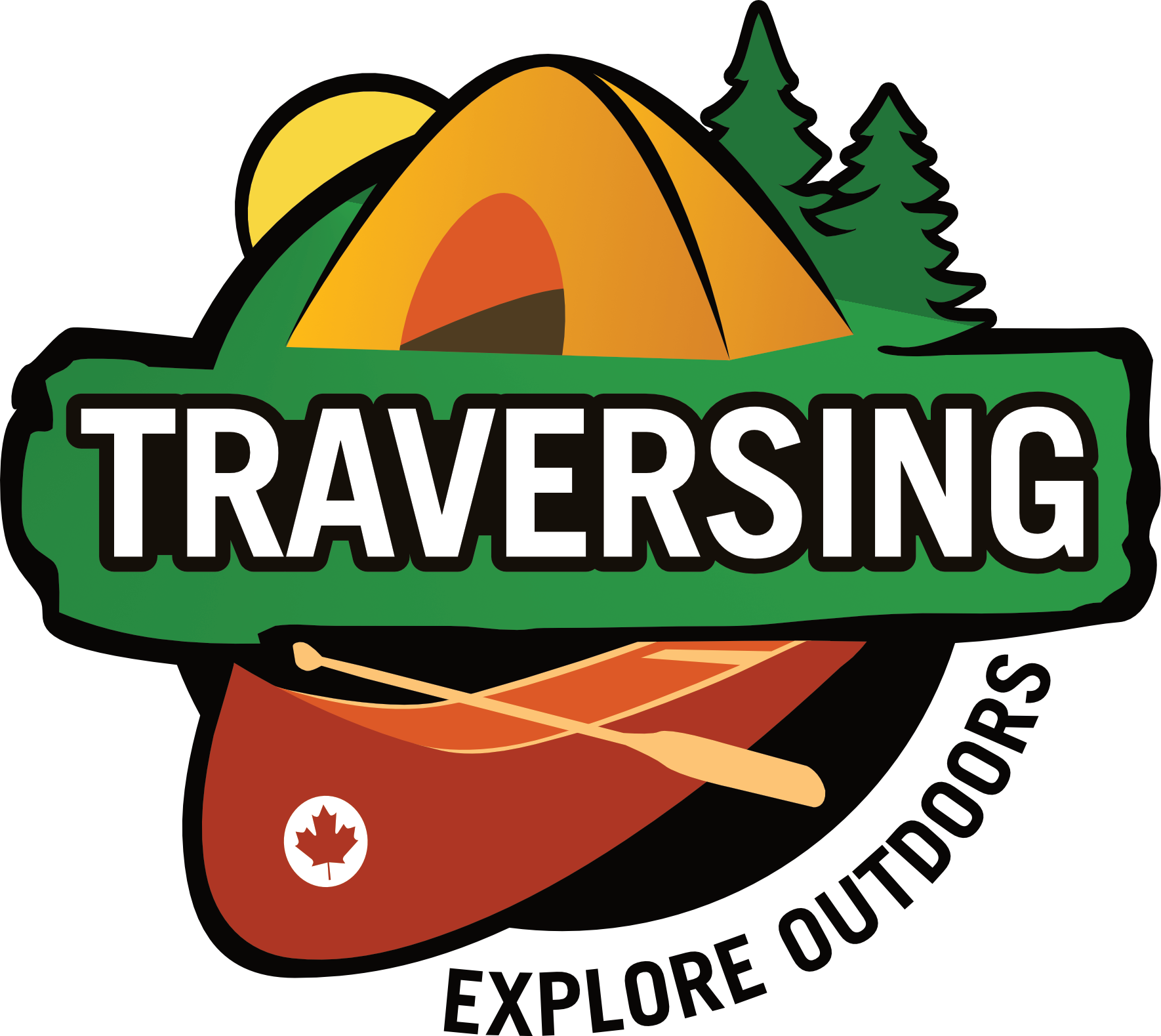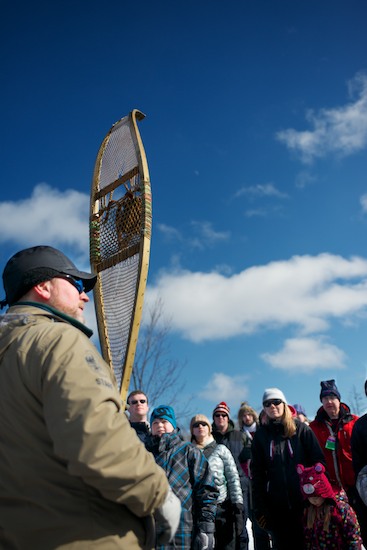Trail Swag Reports: Winter in the Wild Festival 2013

Trail Swag ventured out to Algonquin Park this weekend to check out the 2013 Winter in the Wild Festival. Ontario Parks and the Friends of Algonquin Park planned a jam packed schedule that included activities for all ages throughout the day.
Stopping at the Visitor Centre for a tasty Chilli lunch, it was great to see the centre so full. The viewing deck was packed with people snapping photos of the great view under a gorgeous blue sky. Just as we were enjoying lunch, the bird feeder outside had quite the lineup of birds (and squirrels) chowing down.
Birds were the most common thing spotted this day
Some of the artwork, available for purchase at the Visitor Centre
A guided Winter Bird Walk at the Spruce Bog Boardwalk, and Winter Landscape Photography Tips with Peter Ferguson at the Visitor Centre Theatre were two popular stops, but I wanted to report on two of my favourite events from the day....
Tours of the Algonquin Park Visitor Centre Collections Room
Downstairs at the Visitor Centre is the Algonquin Park Collections Room. Usually only accessible to park staff, this room contains hundreds of artifacts and data, dating back to the 1960s. Rick Stronks gave us a tour of the numerous artifacts and explained how useful the room is.
Numerous taxidermied animals were sitting atop the shelves for use in educational programs, while inside the cupboards were study skins (dried animals, used for education and more recently... as models for carvers), insect collections, and records of data used for both publications and to document what is in Algonquin Park.
In the corner of the room is the herbarium, which is a collection of plant data. Rick mentioned that they are actually getting requests from research students at Universities for plant specimens for their taxonomy work.
Snowshoe at the Visitor Centre
Different shaped snowshoes, each with their own purpose depending on the snowfall
Thanks to Friends of Algonquin for loaning everyone classic snowshoes for the outing
Snowshoeing was such a popular event at this year's Winter in the Wild, that there weren't enough loaner snowshoes for everyone that showed up.
Kevin gave us an introduction to snowshoes, including a brief history of them, and how to put them on and take them off.
A variety of snowshoes, both old and new
The ability to hop on in to snowshoeing made it accessible (and fun) for all ages
Part way in to our 1KM snowshoe hike, we all stopped at the summit of a hill for a break Jeremy had a sled of surprises which he revealed to us once we identified what was different with our surroundings.
Signified by a broken branch (and other telltale signs), Jeremy deduced that a Black Bear had climbed the very Red Oak tree we were surrounding to eat acorns to add to their layer of fat to survive the Winter. Such food sources are also vital for the female Bear during the long road up to giving birth.
A plasticized Bear skat sample containing remnants of Mountain Ash
Black Bears are carnivores... just look at those canine teeth!
How do you capture the attention of today's youth? Show them a Bear skull!
Paul pointed out the claw scars on the tree where the bear climbed the tree. Jeremy mentioned that the sound of bears eating acorns sounds a lot like the crunching sounds of chewing on Christmas candy.
Radio collars were used to track bears, although sometimes they manage to rub the collar off. Current collars now use GPS trackers.
Along our snowshoe route were little stakes with identifiers to indicate animal tracks. In this case a Deer Mouse was bounding through the snow.
Mew Lake Campground
Mew Lake Campground was host to numerous events including ice skating, a campfire and BBQ, hot chocolate, Winter Camping demonstrations and a Night Hike and Wolf Howl.
